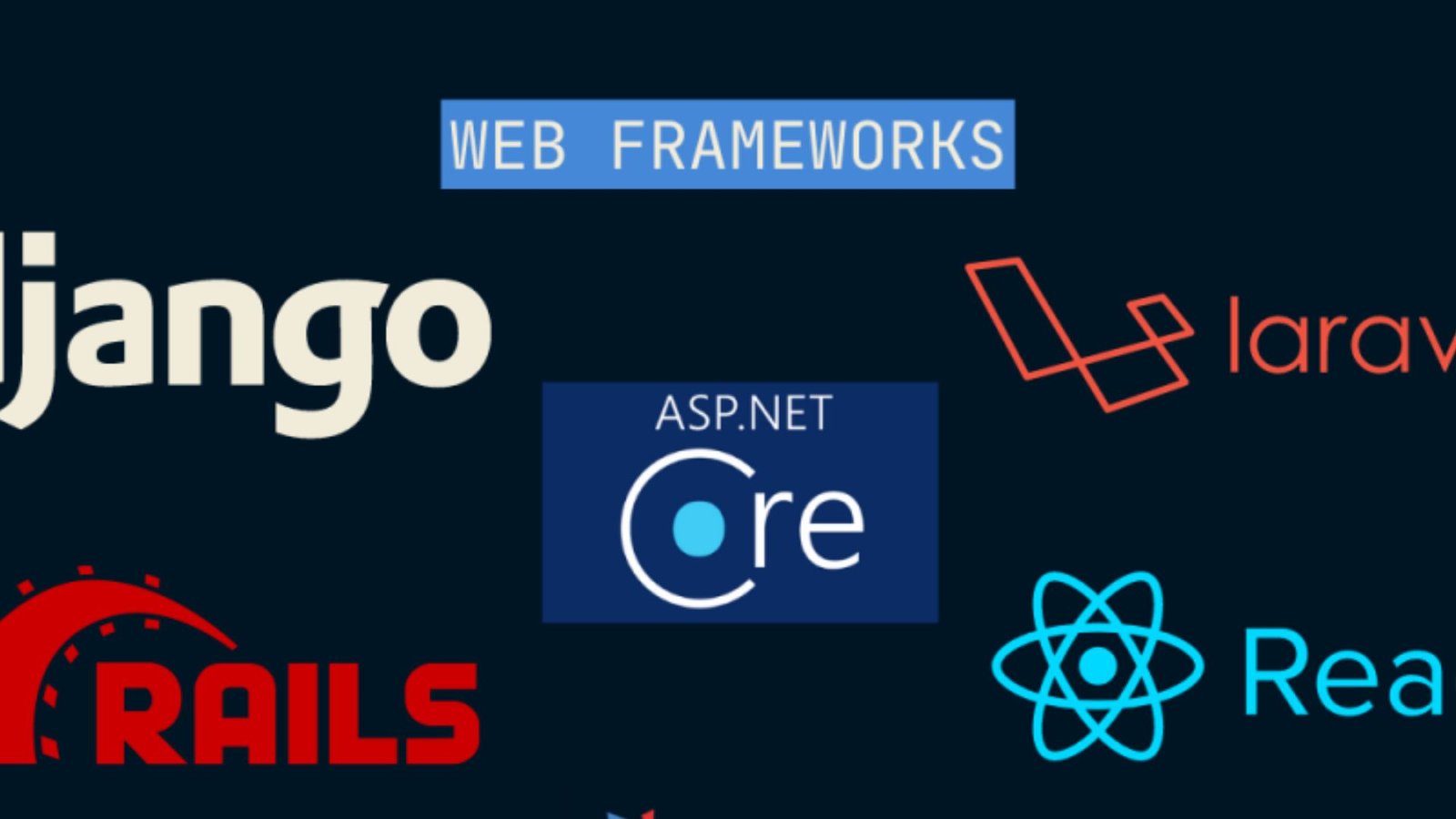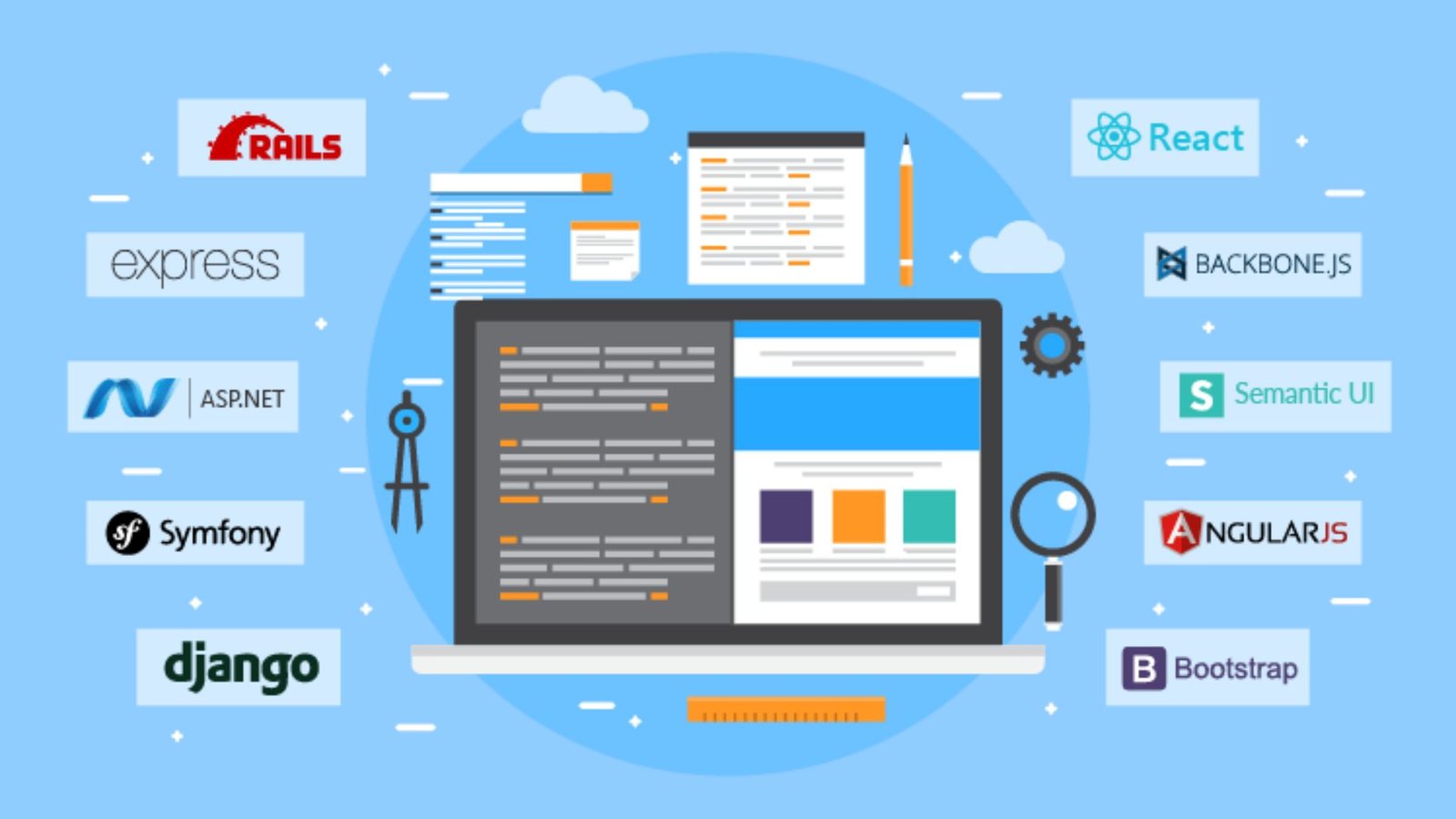Choosing the right web framework is crucial for building efficient, scalable, and maintainable web applications. With numerous options available, selecting the best fit depends on your project requirements, language preferences, and performance goals. Here’s a detailed look at the top web frameworks for modern development.
1. React.js
React.js is a popular front-end JavaScript library maintained by Facebook.
Key Features
- Component-based architecture for reusable UI elements.
- Virtual DOM improves performance and rendering speed.
- Strong community support and extensive libraries.
- Easy integration with other tools and frameworks.
React.js is one of the top web frameworks for building dynamic, responsive user interfaces.
2. Angular
Angular is a comprehensive front-end framework maintained by Google.
Key Features
- Two-way data binding keeps the model and view synchronized.
- Modular architecture simplifies large-scale applications.
- Built-in dependency injection for efficient code management.
- TypeScript support enhances development with type safety.
Angular remains one of the top web frameworks for enterprise-level applications.
3. Vue.js
Vue.js is a lightweight and flexible front-end framework.
Key Features
- Easy to learn and integrate into existing projects.
- Reactive data binding simplifies dynamic updates.
- Component-based structure supports modular development.
- Strong community and extensive plugin ecosystem.
Vue.js is among the top web frameworks for developers seeking simplicity and performance.
4. Django
Django is a high-level Python framework for building secure and scalable web applications.
Key Features
- Follows the “batteries-included” philosophy with built-in features.
- Strong security features to prevent common vulnerabilities.
- ORM simplifies database interactions.
- Rapid development with reusable components.
Django is a leading choice in the top web frameworks for Python developers and full-stack projects.
5. Flask
Flask is a lightweight Python micro-framework ideal for small to medium projects.
Key Features
- Minimalist and flexible, allowing custom solutions.
- Supports extensions for added functionality.
- Easy to learn for beginners in Python web development.
- Clear and concise documentation.
Flask is one of the top web frameworks for simple, high-performance web applications.

6. Ruby on Rails
Ruby on Rails is a full-stack web framework built with Ruby.
Key Features
- Convention over configuration simplifies development.
- MVC architecture promotes organized code.
- Active Record simplifies database management.
- Large collection of gems for rapid feature integration.
Ruby on Rails is consistently listed among the top web frameworks for rapid application development.
7. Express.js
Express.js is a minimal and flexible Node.js web framework for building server-side applications.
Key Features
- Lightweight and fast with minimal overhead.
- Middleware support for handling requests efficiently.
- Seamless integration with Node.js for full-stack development.
- Supports RESTful APIs and real-time applications.
Express.js is one of the top web frameworks for developers working with JavaScript on the server side.
8. Laravel
Laravel is a PHP framework known for elegance and simplicity.
Key Features
- MVC architecture ensures clean, organized code.
- Blade templating engine simplifies front-end integration.
- Built-in authentication and security features.
- Artisan CLI speeds up development tasks.
Laravel is among the top web frameworks for PHP developers seeking a modern, structured approach.
9. ASP.NET Core
ASP.NET Core is a cross-platform, high-performance framework by Microsoft.
Key Features
- Supports multiple platforms including Windows, Linux, and macOS.
- Built-in dependency injection and modular components.
- High scalability for enterprise applications.
- Strong security features for web applications.
ASP.NET Core is one of the top web frameworks for building large-scale, enterprise-level applications.
10. Svelte
Svelte is a modern front-end framework that compiles components into highly optimized JavaScript.
Key Features
- No virtual DOM; updates happen at compile time for faster performance.
- Simple syntax and minimal boilerplate.
- Smaller bundle size improves loading speed.
- Reactive programming built into the framework.
Svelte is considered one of the top web frameworks for high-performance, modern front-end development.
Conclusion
The top web frameworks provide developers with tools to create robust, scalable, and efficient web applications. From front-end frameworks like React, Angular, and Vue.js to back-end solutions like Django, Express.js, and Laravel, each framework offers unique features suited to different project needs.
Selecting the right framework depends on your programming language preference, project size, and development goals. Using these frameworks strategically ensures faster development, maintainable code, and an optimal user experience in modern web applications.











